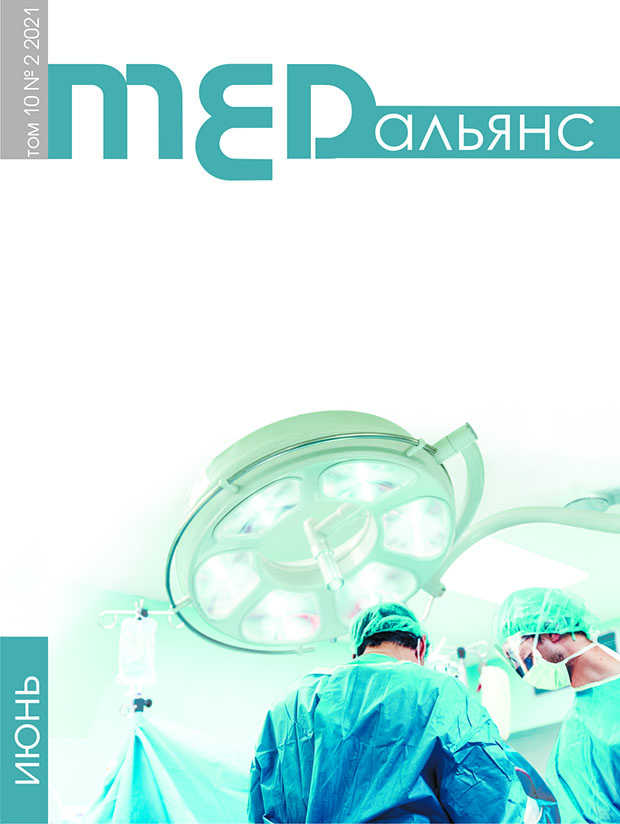Abstract
Introduction. Bronchocele is a relatively frequent incidental finding on computed tomography and is a dilated bronchus filled with mucous content due to continued secretion of the mucous membrane and proximal airway obstruction, which often manifests itself as tubular branched structures associated with the bronchial tree («Finger in glove» sign). Purpose: to present “from simple to complex” diagnostic algorithm for detecting changes in the type of
bronchocele on computed tomography. Results. The differential diagnosis of the causes of bronchocele is wide and includes both congenital and acquired pathologies, which can be divided into obstructive and non-obstructive. Also, etiology-wise, they can be divided into the following groups: congenital infectious pathology, and obstruction of the bronchus by masses or foreign body. Computed tomography is the preferred method for diagnosing bronchocele; in some cases, CT is performed in combination with contrast enhancement for differential diagnosis with arteriovenous malformation or atypical manifestation of lung metastases. In case of a locally located bronchocele, obstructive genesis by masses or foreign body should
always be excluded, which requires the use of bronchoscopic examination methods. The most difficult option for differential diagnosis is bronchocele caused by infectious agents, due to the non-specificity of the radiation pattern. To make a correct diagnosis, it is necessary to verify and
identify the pathogen. Conclusion. The paper presents a diagnostic algorithm that allows to optimally diagnoseis the “bronchocele” type changes.

